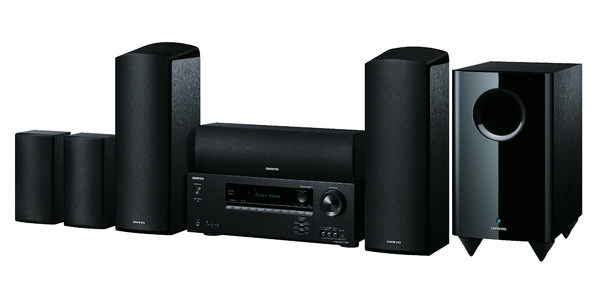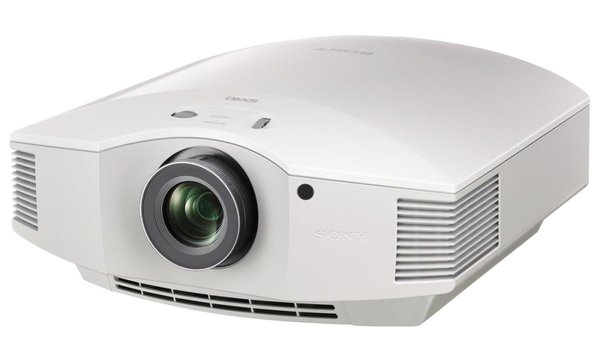Questions and answers: The first acquaintance with the world of home theaters
We continue to sort out the most frequently asked questions and myths from the field of audio . Our starting point is the comments and remarks of the “ Sound ” audio listeners regarding their own experience in selecting audio systems for the home and not only.
Today we will talk about the basic elements of a home cinema and understand what subtleties and nuances you should pay attention to when choosing one or another component.

It is important to choose high-quality sound sources and carefully position them indoors, taking into account its area and shape. If possible, you should take care of sound insulation, and it is even better to approach the process of creating your own cinema complex and take into account not only sound features, but also ease of management along with the interior of the entire room.
')
The standard version of a home cinema in the apartment is a 5.1 system with one subwoofer, a central channel speaker, two front and two rear speakers. The reasonable minimum to feel the volume is system 4.0 (4 speakers without a subwoofer).
Some home theaters are equipped with a soundbar (sound bar), combining the front speakers and the central channel. In them all the speakers are placed in one frontal unit.
There are more interesting options that support technologies such as Dolby Atmos . Its task is to achieve a deep immersion in what is happening on the screen due to the fact that the viewer feels the presence of "an infinite number of speakers" in the hall.
In large commercial cinemas, this system supports up to 128 audio tracks and up to 64 independent signals for speakers. In home systems, it automatically adapts to the specific configuration of the speaker set.

The complete set for creating a home theater Onkyo HT-S5805 allows you to play sound in Dolby Atmos, in configuration 5.1.2. The supplied receiver is equipped with a 4K Ultra HD output.
In order to create a full-fledged home theater, you also need an AV receiver . The AV receiver is equipped with amplifiers for the surround sound channels and numerous additional functions that allow you to convert the video signal from one format to another, provide network capabilities and synchronize with gadgets like iPod and iPhone.
Since we talked a little about sound, let us dwell on the topic of video.
To play a video, you can use a TV or projector. Each of the options has its advantages.
If everything is more or less clear with TVs, then when choosing a projector a lot of questions arise. There is an opinion that all projectors are the same, and cinema projectors are just a product of marketing. This is not true.
Thus, even at a very attractive price, you should not buy an office projector: it is intended only for transmitting a static image and is not able to reproduce the “picture” qualitatively in dynamics. If your budget is limited, it makes sense to look for low-cost options under the JVC or Sony brands, which specialize in the production of such equipment, or consider options in the secondary market.

Sony VPL-HW45ES Full HD Home Cinema Projector with 3D Support
For the equipment to serve you for a long time, you need to properly operate it. Any projector is equipped with a cooling system that protects the lamp from overheating.
The cooling system continues to work even after turning off the projector until the heated lamp cools down to a safe temperature. Therefore, in no case can not turn off the projector from the power until the cooling system is completely stopped. This may cause the lamp to fail.
Regardless of the level of illumination of the room watching TV in most cases comfortable. However, the projection screen is very sensitive to ambient light.
To solve this problem, you can use both regular blackout curtains and special blackout curtains, which provide complete blackout. Lightproof designs can be controlled automatically from the remote.
Cloths screens often have a white matte finish. To improve the contrast, you can use the gray screen. The screen format is determined by its purpose - what you prefer to watch.
The price range of screens on the market is quite wide.
An alternative to the projection screen is a special paint for walls, which has the necessary retroreflective properties. It is applied smoothly and smoothly, while providing a quality image.
This option may be suitable for open-air cinema halls. The unconditional advantages of this technology include the ability to create a screen of any size and low cost.

The screen for the projector Digis Velvet is designed specifically for home theaters - the canvas provides maximum color reproduction, does not deform and does not form waves, and therefore costs more than "office" analogs
PS Our 12th edition of Audio Digest on how to build a home theater, and a little about the production of acoustics.
Today we will talk about the basic elements of a home cinema and understand what subtleties and nuances you should pay attention to when choosing one or another component.

How to start the selection of audio systems for home theater
It is important to choose high-quality sound sources and carefully position them indoors, taking into account its area and shape. If possible, you should take care of sound insulation, and it is even better to approach the process of creating your own cinema complex and take into account not only sound features, but also ease of management along with the interior of the entire room.
')
The standard version of a home cinema in the apartment is a 5.1 system with one subwoofer, a central channel speaker, two front and two rear speakers. The reasonable minimum to feel the volume is system 4.0 (4 speakers without a subwoofer).
“The fact that the human ear poorly localizes low frequencies and is a frequent cause of having a single subwoofer in home systems. It is not easy to understand where the “buu” comes from: something exploded, someone jumped, or a helicopter flew by.
Localization, in fact, is precisely the medium and high frequencies, ”explains Timofey Shikolenkov, director of marketing and business development in Audiommania.
Some home theaters are equipped with a soundbar (sound bar), combining the front speakers and the central channel. In them all the speakers are placed in one frontal unit.
There are more interesting options that support technologies such as Dolby Atmos . Its task is to achieve a deep immersion in what is happening on the screen due to the fact that the viewer feels the presence of "an infinite number of speakers" in the hall.
In large commercial cinemas, this system supports up to 128 audio tracks and up to 64 independent signals for speakers. In home systems, it automatically adapts to the specific configuration of the speaker set.

The complete set for creating a home theater Onkyo HT-S5805 allows you to play sound in Dolby Atmos, in configuration 5.1.2. The supplied receiver is equipped with a 4K Ultra HD output.
In order to create a full-fledged home theater, you also need an AV receiver . The AV receiver is equipped with amplifiers for the surround sound channels and numerous additional functions that allow you to convert the video signal from one format to another, provide network capabilities and synchronize with gadgets like iPod and iPhone.
Two sets of equipment mentioned in this video
Since we talked a little about sound, let us dwell on the topic of video.
What to choose: TV or projector?
To play a video, you can use a TV or projector. Each of the options has its advantages.
“Televisions are an uncompromising leader, [when it comes to] small diagonals: 40, 42, 47, 55 inches. There are models available that provide a good quality picture. The gap between televisions and projectors appears on the diagonals of 60 inches.
If the task is to purchase a large TV inches from sixty, then it makes sense to come to the store and talk about what to buy: a TV or a projector, taking into account certain parameters of the room, ”advises Alexey Shubin, one of the leading audiophiles specialists.
If everything is more or less clear with TVs, then when choosing a projector a lot of questions arise. There is an opinion that all projectors are the same, and cinema projectors are just a product of marketing. This is not true.
“The matrices that stand in the projectors have a physical resolution: the number of dots horizontally and vertically. When we input an excellent [from its physical] resolution to the projector, a transformation begins to fit the image into the resolution that the projector can show. Any transformation is a deterioration in quality. You should always think about it.
This works for both sound and video. Of course, mathematical algorithms are included here. It must be remembered that when buying a projector for an office, we get a projector for resolving an office computer, and this is not always suitable for cinema, ”says Timofey Shikolenkov.
Thus, even at a very attractive price, you should not buy an office projector: it is intended only for transmitting a static image and is not able to reproduce the “picture” qualitatively in dynamics. If your budget is limited, it makes sense to look for low-cost options under the JVC or Sony brands, which specialize in the production of such equipment, or consider options in the secondary market.

Sony VPL-HW45ES Full HD Home Cinema Projector with 3D Support
For the equipment to serve you for a long time, you need to properly operate it. Any projector is equipped with a cooling system that protects the lamp from overheating.
The cooling system continues to work even after turning off the projector until the heated lamp cools down to a safe temperature. Therefore, in no case can not turn off the projector from the power until the cooling system is completely stopped. This may cause the lamp to fail.
What should be the screen for home theater
Regardless of the level of illumination of the room watching TV in most cases comfortable. However, the projection screen is very sensitive to ambient light.
To solve this problem, you can use both regular blackout curtains and special blackout curtains, which provide complete blackout. Lightproof designs can be controlled automatically from the remote.
Cloths screens often have a white matte finish. To improve the contrast, you can use the gray screen. The screen format is determined by its purpose - what you prefer to watch.
The price range of screens on the market is quite wide.
“Screens are a whole separate business. There are both cheap and expensive screens. Of course, someone can hang a sheet instead of a screen, but it’s enough to look once at an expensive screen to understand what they are taking so much money for. - says Timofey Shikolenkov. “By purchasing another screen, you can get a completely different result with the same projector.”
An alternative to the projection screen is a special paint for walls, which has the necessary retroreflective properties. It is applied smoothly and smoothly, while providing a quality image.
This option may be suitable for open-air cinema halls. The unconditional advantages of this technology include the ability to create a screen of any size and low cost.

The screen for the projector Digis Velvet is designed specifically for home theaters - the canvas provides maximum color reproduction, does not deform and does not form waves, and therefore costs more than "office" analogs
PS Our 12th edition of Audio Digest on how to build a home theater, and a little about the production of acoustics.
Source: https://habr.com/ru/post/399857/
All Articles